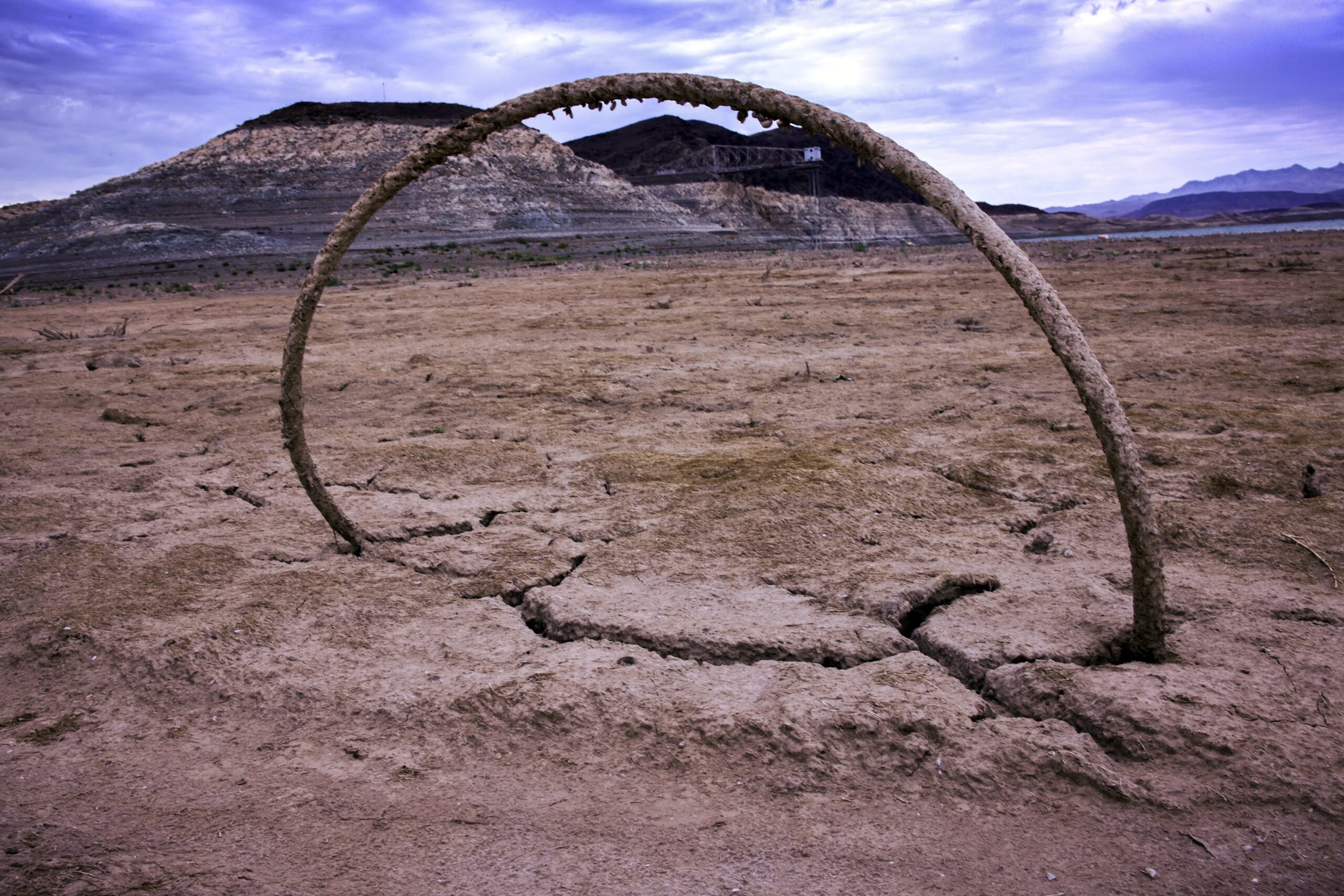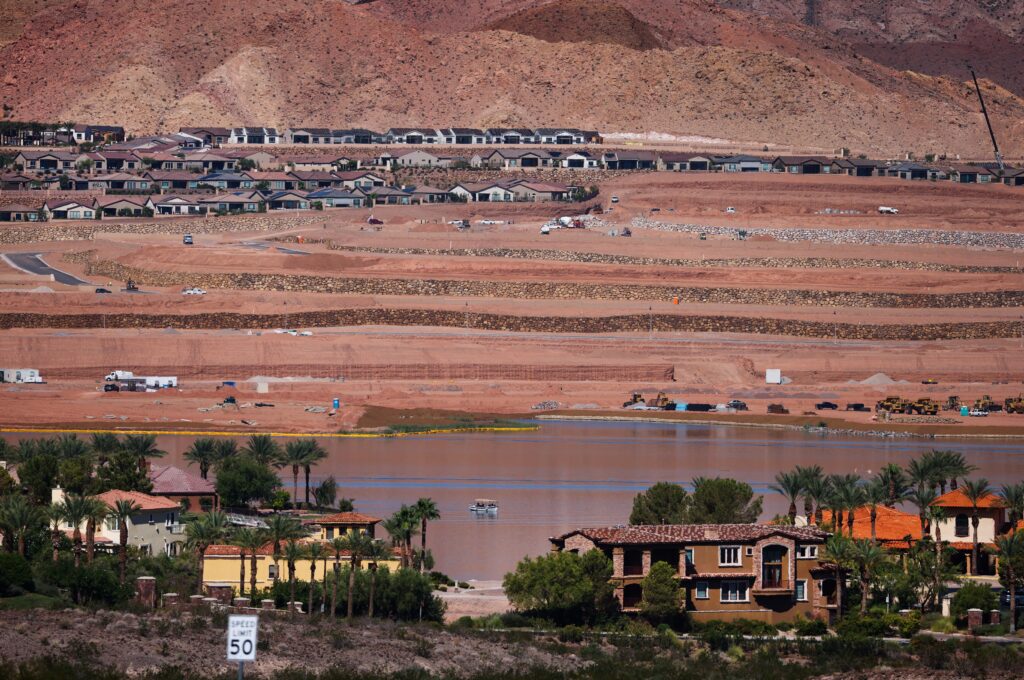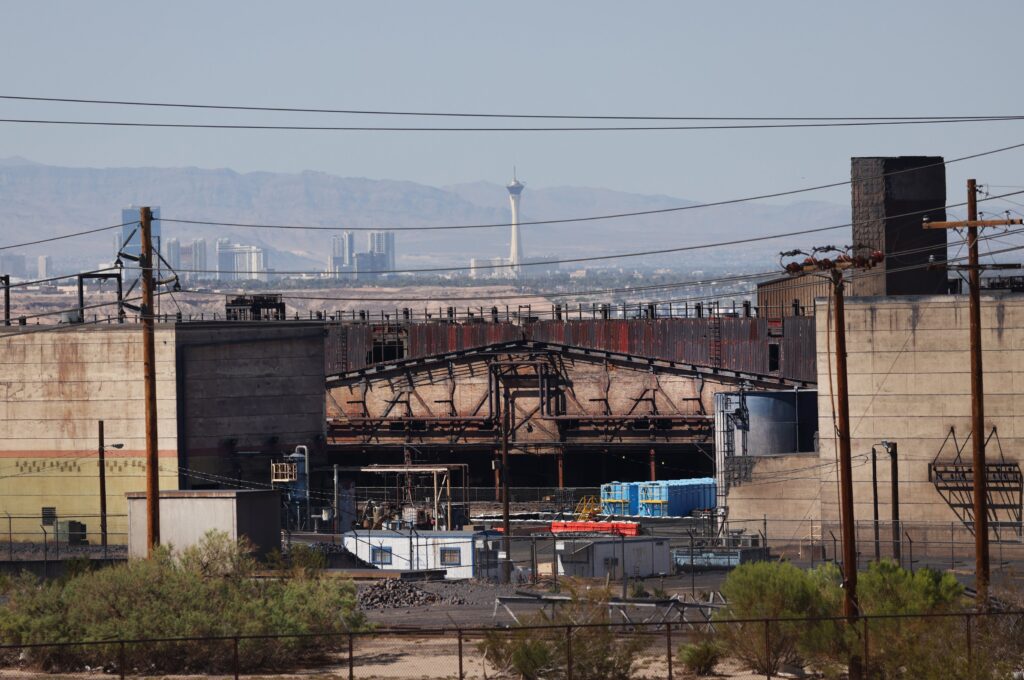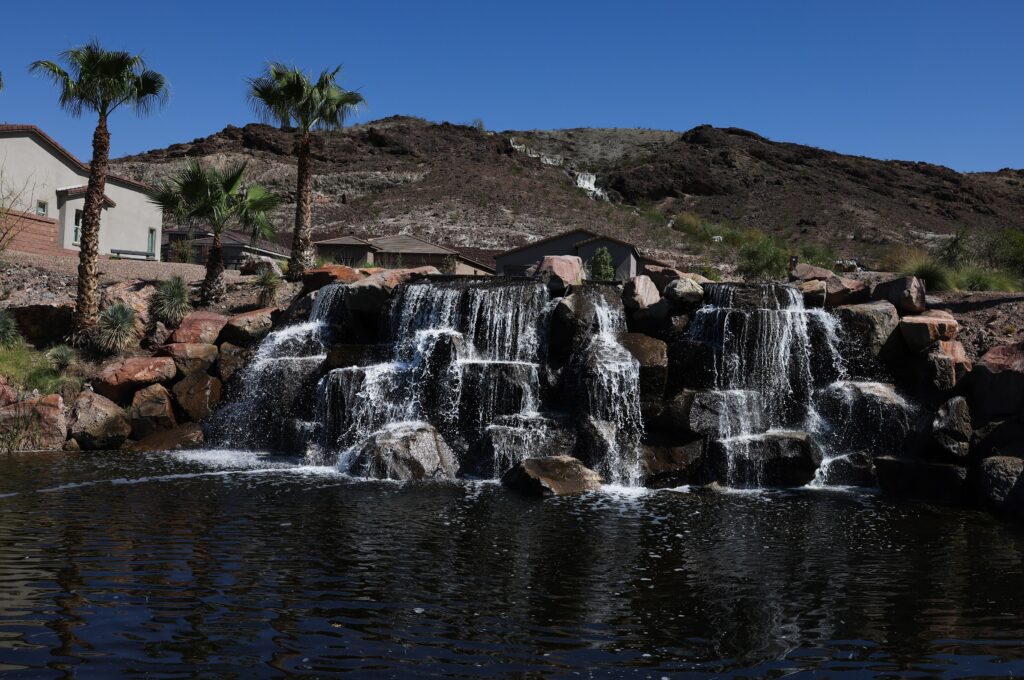As Lake Mead drops, a privately operated intake runs dry — and a bankruptcy ensues

Good morning, and welcome to the Indy Environment newsletter.
As always, we want to hear from readers. Let us know what you’re seeing on the ground and how policies are affecting you. Email me with any tips or suggestions at [email protected]
To get this newsletter in your inbox, subscribe here.
It was not supposed to happen this year. The Basic Water Company believed its Colorado River intake would operate into 2023. Then Lake Mead began declining at a faster pace than federal modelers had previously forecasted. By July, the company’s decades-old intake went dry.
This month, the company, in control of some of the state’s oldest Colorado River rights, filed for bankruptcy, citing the drought and an inability to access water from the lake. It is the latest sign of the far-reaching consequences revealed by the unfolding crisis on the Colorado River, which has seen its reservoirs quickly drop due to overuse and aridification, driven by climate change.
Most of the water supply for the Las Vegas metro area is diverted from Lake Mead through the Southern Nevada Water Authority’s primary intakes, which extend deep into the reservoir. With the construction of the “third straw” and low-lake pumping station, Las Vegas got more security, ensuring it could access water in a worst-case scenario, even when Colorado River users could not.
But a smaller portion of Southern Nevada’s water supply had, for many years, taken a different course; it came up through a privately owned World War II-era intake operated by Basic Water.
For decades, the intake, managed by Basic Water and built in the 1940s, had delivered water to Henderson and industrial users operating in the city. Some of that water was used by the city of Henderson to fill Lake Las Vegas, an artificial lake that is at the center of golf courses and luxury homes inside a master-planned community bordering the Lake Mead National Recreation Area.
Now, Henderson officials, the Southern Nevada Water Authority and water users have entered into interim agreements, and they are discussing long-term strategies for the future. Exactly what that future will look like is unclear. For instance, the city is under contract to deliver its water to Lake Las Vegas, but Henderson spokesperson Kathleen Richards said “the failure of Basic Water Co. to deliver water created a force majeure condition, which was contemplated in the agreements.”
A force majeure clause is a contractual provision that frees parties from some liabilities in rare and extraordinary cases, such as natural disasters, pandemics, crimes, wars and acts of God.
In an email last week, Richards added that Henderson is “working in good faith with Lake Las Vegas and our regional partners to find an alternative permanent solution to mitigate the force majeure condition going forward. What that solution encompasses, we don’t know at this time.”
As of now, the effects of the offline Basic intake are mainly economic. Water users tied to the intake are still receiving water. Recent storms helped fill Lake Las Vegas. And the city is now getting water delivered from the main Southern Nevada water system, though not without a hefty price tag for Basic Water and four companies that are mainly involved with industrial materials, metals and chemicals: Timet, Olin, Borman and Lhoist.

For tapping into the main system, Henderson required a roughly $1 million deposit. The water authority charged about $4.9 million in connection and system fees, according to Basic Water’s bankruptcy filing. At the same time, Basic Water took a financial hit. It was no longer generating the same revenue from delivering water, money that it relied on to operate and pay off bonds.
Instead of getting raw, or untreated, water from Lake Mead, they are getting potable water, meaning it’s treated to drinking-quality standards and a more expensive water source. As the bankruptcy filing noted, “the debtors and the [industrial companies] are paying the city for potable water at a rate that is four to five times higher than the rate for raw water.”
Moreover, the arrangement was only agreed to as an “emergency interim solution.” The parties had aimed to negotiate a more permanent solution over the summer, with a deadline of mid-September. But “a viable permanent solution has not been achieved,” according to a filing in bankruptcy court.
How the situation came to be is a story of how Henderson developed and grew.
What is now Henderson was once the “Basic Townsite,” which grew around Basic Magnesium, Inc., a company backed by the Anaconda Copper Company to buoy industrial production during World War II, according to the bankruptcy filing. In the 1940s, the federal government’s Defense Production Corporation helped build an intake, a roughly 16-mile pipeline and power lines to transport water from Lake Mead, the filing said. Eventually that water system would come under the control of Basic Management, Inc. and later a sister company, the Basic Water Company.
The water rights in question equaled about 40,000 acre-feet, or slightly more than 10 percent of Nevada’s 300,000 acre-foot Colorado River allocation (an acre-foot is the amount of water that can fill one acre to a depth of one foot). In the decades to come, the rights for the Basic water would be split among the industrial companies, the city of Henderson and the water authority.
As a result, for years (long before Las Vegas’ primary intakes were built), the Basic Water intake delivered Lake Mead water to Henderson, which currently has rights to about 16,000 acre-feet. Henderson had relied on Basic’s intake for water starting in the 1950s, but increased its supply in 1990, at the same time that Lake Las Vegas was being contemplated and debated.
In fact, Lake Las Vegas played a key role in helping the city obtain those water rights, according to Cody Winterton, division president for Raintree Investment Corporation, which is continuing to develop the community, where large, empty building pads await new homes. “But for Lake Las Vegas,” he said, “Henderson wouldn’t have been able to prove they could put that water density to use. You have to go in with a plan and show ‘here’s what we’re going to do with the water.”
For the next few years, everything seemingly worked out. Henderson devoted a portion of these rights to Lake Las Vegas, which became Henderson’s largest commercial water user (Winterton disputes this, arguing the reported use statistics is an aggregate value unfairly lumping together multiple golf courses and development). Lake Las Vegas, the city said, is allowed to order up to 7,000 acre-feet of raw water annually. Other Basic Water rights went to the city and the companies.
But the system was starting to show cracks by the early 2000s. Just outside of Lake Las Vegas, Lake Mead had begun a precipitous decline. A long-term drought, worsened by warmer temperatures, combined with the continued overuse of the Colorado River to deplete the amount of water stored at Lake Mead.

Starting in the mid-2000s, Basic began looking for ways to augment its intake, which fails when Lake Mead falls below about 1,043 feet above sea level (the reservoir dipped below this “failure elevation” by July). But its options were limited. In 2018, three contractors bidding on a retrofit “expressed reservations about the project because modification of the 80-year old structure would cause damage that might lead to failure of the structure,” the bankruptcy filing said.
Instead, Basic began looking to sell its water system — first to the city of Henderson and then to the water authority. By 2021, Basic was again consulting with a construction firm on a possible engineering fix. But conditions on the Colorado River continued to deteriorate this summer, and “given the accelerating pace of the decline, none of the designs could be constructed before the surface level of Lake Mead reached the failure elevation,” Basic’s bankruptcy filing states. Some time around July 1, the Basic intake stopped operating.
In an email, a spokesperson for Basic Water said “due to [the] system's inability to draw water for the foreseeable future, [Basic Water] has filed for protection under Chapter 11 of the United States Bankruptcy Code to facilitate a process to resolve the water system’s long-term future.”
Priscilla Howell, director of Henderson’s utilities agency, said the intake going offline has had no direct impact on the city’s ability to provide water to its customers because it is “redundant” and can easily tap into the water authority’s main system. Yet she said everyone is exploring how to “most effectively connect to another raw water source to give the valley some options.”
“There’s a lot of people doing a lot of thinking on that right now,” Howell said.
In the past, water from the Basic intake at Lake Mead was delivered to Henderson — with a portion of that water then redelivered to the artificial lake at Lake Las Vegas. Once there, the untreated water was used to irrigate golf courses and other landscaping. At this point, the city has not put any additional water in the lake, Howell said, though it entered into two temporary deals with Lake Las Vegas for limited landscaping and a golf clubhouse’s HVAC system.
As for the lake’s future, “there's a lot of variables that go into answering that,” Howell said.
In an interview last week, Winterton said “it would be a breach of contract if Henderson diverted that water and took it away from us and tried to do something else with it.” But that has not been on the negotiating table. Instead, he described ongoing “professional discussions” with the city and water authority about ways Lake Las Vegas could reduce its water consumption.
Winterton noted that Lake Las Vegas captured significant amounts of stormwater during recent storms, something he touted as a benefit because it meant Las Vegas could leave water in Lake Mead. Like other large water users, Winterton said Lake Las Vegas is looking at how to lower its consumption and comply with the water authority’s conservation regulations.
Whether it makes sense to have the artificial lake, Winterton said that’s besides the point now. The community, he argued, was built in the 1980s — with support from all levels of government.
“When it comes right down to it, this is a commitment that was made by everybody,” Winterton said. “It’s really unfair in 2022 to say ‘well, we don’t like the lake anymore, so maybe there’s a better use of water.’ I don’t know if that’s the right way to analyze the situation.”

Here’s what else I’m watching this week:
Nevada files legal motion to end Yucca Mountain construction process: On Tuesday, the state of Nevada filed a legal brief with the federal Nuclear Regulatory Commission that officials said was aimed at stopping the nuclear waste repository from being constructed in the state — once and for all. I’ve posted a copy of the filing here and the Nevada Current’s Jeniffer Solis wrote about the development. The state also unveiled a website laying out its argument.
- Secretly-shipped plutonium removed faster than planned, via the Associated Press.
The Colorado River Compact, 100 years later: In collaboration with the Associated Press, The Colorado Sun, The Albuquerque Journal, The Salt Lake Tribune and The Arizona Daily Star, we took a look at where the water goes in the Colorado River and how the compact, a foundational document, stands up one century later. You can check out all the stories here.
- Water, heat and desert landscaping: The Review-Journal’s Colton Lochhead looked at a Desert Research Institute study analyzing the effects of removing grass on urban heat.
- What’s on the table for California’s river use, from The Desert Sun’s Janet Wilson.
For Native Climate, reporter Robin Smuda writes about the impact of drought, heat and fires on valley hímu (willow), calling for more interaction with their habitat, rather than a mindset that focuses only on resource production or protection: “These are long-standing problems, but solutions are underway. For the first time in a generation, valley hímu is now being worked with on Wá∙šiw [Washo] land in mass. It is a return and reimagining of what was done before”
Smoke in Reno from the Mosquito Fire closed schools last week.
- Our photographer David Calvert documented the effects of smoke.
“Conservationists are seeking Endangered Species Act protection for a tiny snail half the size of a pea that is known to exist only in high-desert springs near a huge lithium mine planned in Nevada along the Oregon state line,” The Associated Press’ Scott Sonner reported last week.
A critical take on Michael Heizer’s “City” mega-sculpture in the Nevada desert: “City reinscribes the values of colonialism on the landscape and regenerates the in/visible power structures that made the creation possible,” Tristan Athone wrote in a recent essay for Grist.
